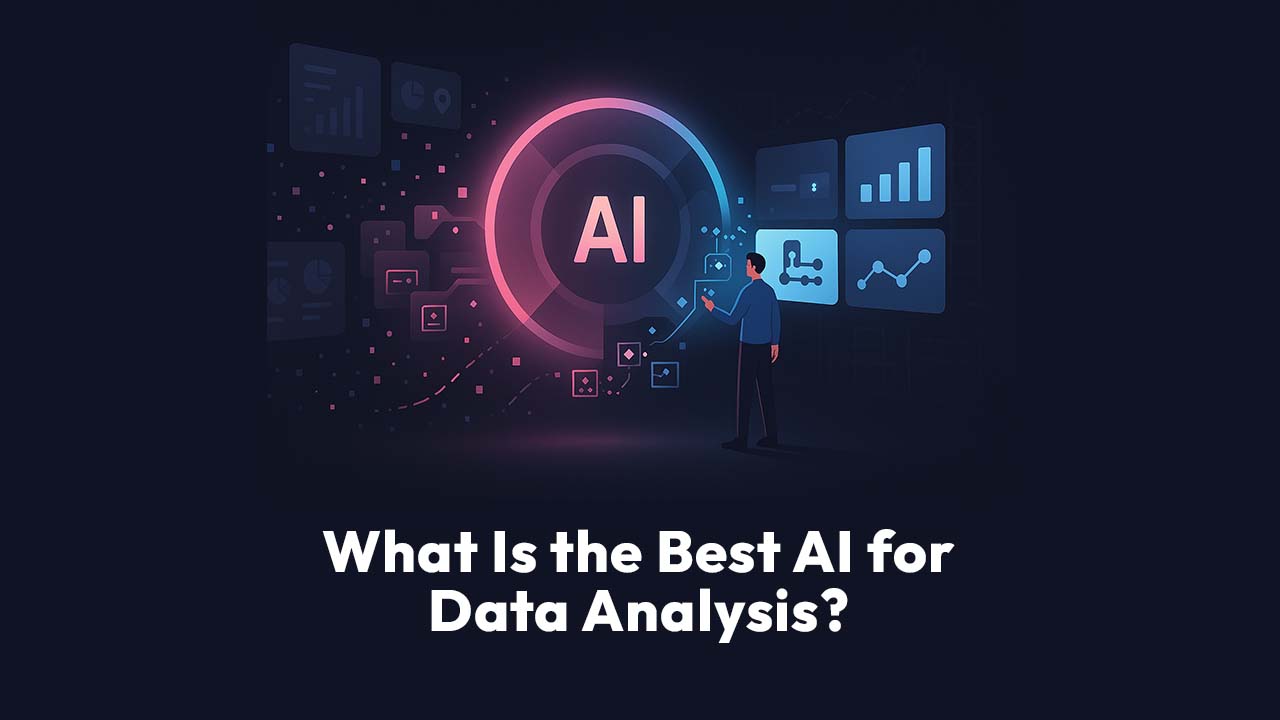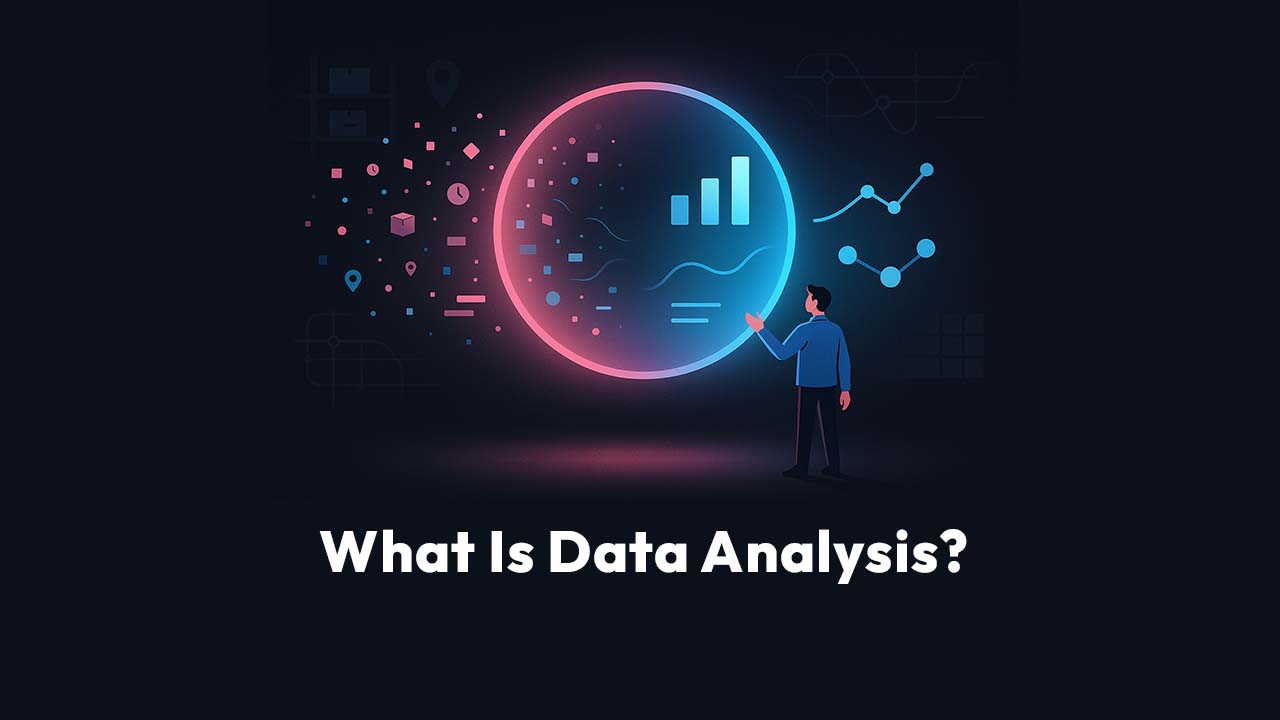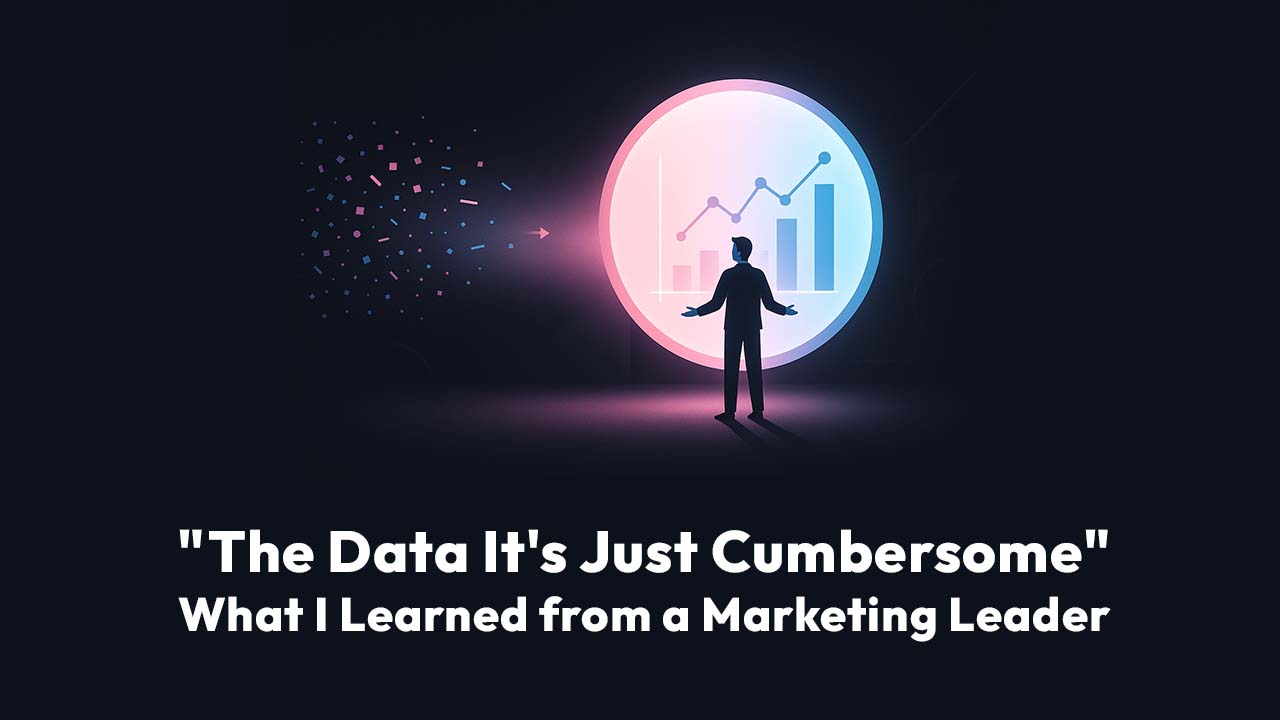Why Most Companies Are Looking at AI for Data Analysis
Here's the uncomfortable truth: Your operations team is drowning in data, and most "AI-powered" analytics tools are making the problem worse, not better.
What is the best AI for data analysis for business operations?
The best AI for data analysis combines multi-step investigation capabilities with explainable machine learning and natural language interfaces that work where your team already operates; like spreadsheets and Slack.
It should find "why" metrics changed, not just show "what" happened, and deliver insights in seconds without requiring technical expertise or IT involvement.
That's the direct answer.
But if you're like most operations leaders we've worked with, you've probably tried three or four analytics tools already, and your team still exports everything to Excel to do the real analysis.
The problem isn't your team.
It's that most tools calling themselves "AI for data analysis" are neither artificial intelligence nor actually useful for analysis.
What Is Data Analysis? Definition
Let's start with basics, because this is where most tool evaluations go wrong.
What is data analysis?
Data analysis is the systematic process of inspecting, transforming, and modeling data to discover useful patterns, draw conclusions, and support decision-making. For operations leaders, it means turning raw information from your systems into specific actions that improve efficiency, reduce costs, or increase revenue.
Notice what's missing from that definition? Nothing about dashboards. Nothing about charts. Nothing about "visual analytics."
Real data analysis answers questions like:
- Why did warehouse efficiency drop 15% last month?
- What factors predict which customers will churn?
- Which process changes would have the highest ROI?
The emphasis is on investigation, not visualization. This distinction separates tools that drive decisions from tools that just look pretty in board meetings.
Why Traditional Data Analysis Is Failing Your Business
Let me paint you a picture you'll recognize.
It's Monday morning. Your CFO asks a simple question in the leadership Slack channel: "Why did our fulfillment costs spike 23% last week?"
The traditional process:
- Hour 1: Someone promises to "look into it"
- Hour 2-3: Data team pulls reports from five different systems
- Hour 4-6: Analyst creates pivot tables and charts
- Hour 7-8: Testing hypotheses one by one
- Tuesday morning: Finally get an answer (maybe)
- Result: "We think it might be related to carrier mix, but we're not sure"
Meanwhile, the CFO needed that answer Monday at 9:15 AM to decide whether to renegotiate carrier contracts before the weekly rate lock.
This isn't a training problem. It's an architecture problem.
Most analytics tools (even those claiming AI capabilities) can only answer single queries.
Ask "why did costs spike?" and they show you a cost chart.
- That's not analysis.
- That's just retrieval.
Here's what shocked me when we analyzed this: Operations teams spend 73% of their "analysis time" on data preparation and only 27% on actual insight discovery. And that 27%? It's usually guesswork because testing multiple hypotheses manually is too time-consuming.
What Makes an AI Tool "Best" for Business Data Analysis?
Before evaluating specific tools, you need the right criteria.
Most comparison charts focus on the wrong things: number of connectors, visualization types, whether it has a mobile app.
None of that matters if your team can't get answers.
Here's what actually determines if an AI tool will work for operations:
- Investigation capability: Can it test multiple hypotheses simultaneously to find root causes?
- Explainability: When it makes predictions, can your team understand and trust why?
- Accessibility: Can business users operate it independently, or does IT control everything?
- Integration: Does it work where your team already operates (spreadsheets, Slack)?
- Speed to insight: Seconds? Minutes? Hours?
- Cost structure: Fixed pricing or usage-based billing that spirals?
- Schema flexibility: What happens when your CRM adds a field? Does everything break?
Notice that "AI-powered" isn't on this list. That's table stakes now. The question isn't whether a tool uses AI, but how it uses AI and whether that AI actually helps your operations team make better decisions faster.
Let me show you why most tools fail this test.
The Three Critical Capabilities Your AI Data Analysis Tool Must Have
1. Investigation, Not Just Querying
This is the single biggest differentiator, and most tools (including the expensive enterprise ones) completely miss it.
Single query approach (what most tools do):
- You ask: "Why did costs spike?"
- Tool response: Shows a cost trend chart
- Your next step: Manually think of what might have caused it, ask another question
- Result: 15 separate queries over 30 minutes, still guessing
Investigation approach (what best-in-class tools do):
- You ask: "Why did costs spike?"
- Tool response: Automatically tests 8-10 hypotheses simultaneously:
- Carrier mix changes
- Package weight distribution shifts
- Geographic routing changes
- Volume fluctuations by region
- Delivery speed tier mix
- Fuel surcharge impacts
- Seasonal pattern deviations
- New warehouse efficiency
- Result: "Costs spiked because new fulfillment center in Memphis has 34% higher pick/pack time. Impact: $47K. Recommendation: Accelerate training program."
- Time: 45 seconds
That's not an exaggeration.
We watched an operations director find the root cause of a 6-month inventory accuracy problem in 38 seconds using multi-hypothesis investigation.
Their previous process? Two analysts spent three weeks on it.
The technical term for this is "agentic analytics": AI that acts as an agent conducting systematic investigation, not just retrieving information on command.
2. Explainable Machine Learning (Not Black Boxes)
Here's where most "AI analytics" tools fail spectacularly.
They either:
- Have no real ML: Just basic statistics masquerading as AI
- Have black-box ML: Neural networks that give predictions without explanations
- Have ML for technical users only: Require Python/R skills to use
What you actually need: Three-layer architecture that combines power with transparency.
Layer 1 - Automatic data preparation:
- Cleans data, handles missing values
- Engineers features (creates predictive variables)
- Bins continuous variables for interpretability
- All happening invisibly in the background
Layer 2 - Real machine learning execution:
- Decision trees (can be 800+ nodes deep)
- Rule-based learning (generates hundreds of if-then rules)
- Clustering algorithms (finds natural groupings)
- These are PhD-level algorithms, not simple statistics
Layer 3 - AI explanation in business language:
- Translates complex ML output to actionable insights
- "High-risk customers: 3+ support tickets in 30 days + inactive 30+ days + tenure under 6 months"
- Provides confidence scores and business impact
- Recommends specific actions
Let us give you a real example. A manufacturing operations manager asked their analytics tool: "Which maintenance activities predict equipment failures?"
Traditional BI tool response: Shows a chart of failure rates by equipment type.
Black-box AI tool response: "Equipment A has 73% failure probability" (no explanation why).
Best practice three-layer response: "Equipment failures predicted by three factors: 1) Vibration readings exceed 2.4mm/s (89% accuracy), 2) Lubrication intervals exceed 45 days (compounds risk), 3) Operating temperature variance >8°C (early indicator). Recommend: Immediate inspection of 12 machines matching all three criteria. Potential prevention: $340K in downtime costs."
See the difference?
The operations manager can act on that information immediately because they understand the reasoning and trust the recommendation.
3. Natural Language That Actually Works
Every tool claims natural language capabilities. Most lie.
What they mean by "natural language":
- Recognizes specific keywords
- Requires precise phrasing
- Breaks with typos or synonyms
- Shows error messages for complex questions
- Requires training to learn the right way to ask
What you need:
- Understands business intent, not just keywords
- Maintains conversation context
- Handles follow-up questions
- Works in your existing tools (Slack, Teams)
- Suggests next questions based on findings
Here's a test: Try asking your current analytics tool this sequence:
- "Show me our top customers this month"
- "Now filter to just enterprise segment"
- "What's different about the ones who expanded vs the ones who didn't?"
- "Can you predict which other enterprise customers will expand?"
- "Score all enterprise accounts by expansion probability"
- "Push those scores to Salesforce"
If it handles that conversation (with context retention, ML analysis, and CRM integration) you have a real natural language system. If it chokes on question 2 or 3, you have keyword matching with a chat interface.
How to Evaluate AI for Data Analysis
The adoption rate metric is your best predictor of ROI. If only 20% of licensed users actually use a tool monthly, you're wasting 80% of your investment. More importantly, that means 80% of your team still can't get the insights they need.
Real-World Example: From Hours to Seconds
Let me share a specific scenario that happens in operations teams constantly.
The Question: "Why did our customer support ticket resolution time increase from 4.2 hours to 6.8 hours over the last month?"
Traditional process with standard BI tools:
Monday 2 PM: Question asked
Monday 2-3 PM: Pull ticket data from support system
Monday 3-4 PM: Create pivot tables by category, agent, time of day
Monday 4-5 PM: Manually examine patterns, form hypotheses
Tuesday 9-11 AM: Test first hypothesis (staff changes)
Tuesday 11 AM-12 PM: Test second hypothesis (ticket complexity)
Tuesday 2-4 PM: Test third hypothesis (escalation process)
Tuesday 4-5 PM: Compile findings into report
Wednesday morning: Finally present answer
Total time: 12+ analyst hours over two days
Cost: $840 in analyst time (at $70/hour)
Business impact: Decision delayed by 36 hours
Best practice AI investigation approach:
Monday 2:00 PM: Ask in Slack: "Why did support resolution time increase?"
Monday 2:00:45 PM (45 seconds later): Complete investigation delivered:
"Resolution time increase driven by three factors:
Primary cause (67% of impact): New agent onboarding class handling 34% of volume with 9.2-hour average resolution vs team average of 4.1 hours. Started handling cases Oct 15.
Secondary cause (21% of impact): Technical issues (API timeouts) increased 340% for payment-related tickets. IT ticket #4782 opened Oct 18, still unresolved.
Contributing factor (12% of impact): Escalation threshold changed Oct 12, routing more complex cases to L1 instead of direct L2 assignment.
Recommendations:
- Extend new agent training by two weeks (projected impact: -1.8 hours resolution time)
- Prioritize IT ticket #4782 resolution (projected impact: -0.6 hours)
- Revert escalation threshold to previous setting (projected impact: -0.4 hours)
Projected resolution time after changes: 4.4 hours (normal range)"
Total time: 45 seconds
Cost: $0 in analyst time
Business impact: Decision made immediately, changes implemented same day
The difference? The investigation AI tested multiple hypotheses simultaneously, ran ML analysis on resolution patterns, identified specific contributing factors, quantified each impact, and provided actionable recommendations: all automatically.
That's not a cherry-picked example. That's standard capability for best-in-class tools.
What About the "Big Names" in AI Data Analysis?
You're probably wondering about the enterprise tools everyone talks about.
Let's be honest about what they actually deliver:
Tableau Pulse, Power BI Copilot: Enhanced query interfaces, not investigation engines. They'll show you what changed but not why. Their "AI" uses embedding models from 2018; that's text similarity matching, not intelligence. According to Stanford research, these tools achieve only 33.3% accuracy on complex business questions.
ThoughtSpot, Sisense, Domo: Better natural language than traditional BI, but still single-query architecture. Ask "why did revenue drop?" and you get a revenue chart. Their ML capabilities require separate modules, technical skills, and don't integrate with the query interface. Cost structures often spiral; one documented case showed 1,120% renewal increases.
Snowflake Cortex, Databricks AI: Powerful for data scientists, unusable for operations teams. Require SQL knowledge, lengthy implementations (6+ months typical), and massive costs ($1.6M annually for 200 users documented). Plus per-query charges mean you pay every time someone explores data.
DataGPT, Zenlytic, DataChat: Modern startups with better interfaces, but rigid architectures. Their semantic models are "rare to adjust" according to their own documentation, meaning when your CRM adds a field, you're stuck. Most have zero customer reviews after years in market, suggesting adoption problems.
The pattern: Traditional BI added chat interfaces. Data platforms added AI features. Neither reimagined analytics from the ground up for business user investigation.
What you actually need: A platform built for investigation first, that happens to have chat; not a chat interface bolted onto query tools.
FAQ
What is the difference between AI data analysis and traditional business intelligence?
Traditional BI answers "what happened" by showing charts and dashboards. AI data analysis answers "why it happened" and "what to do about it" through automated investigation and machine learning. The fundamental difference is investigation capability, testing multiple hypotheses simultaneously rather than requiring users to manually explore one query at a time.
How accurate is AI for business data analysis?
It depends entirely on the approach. Black-box AI (neural networks) can be accurate but unexplainable, making it risky for business decisions. Explainable ML methods like decision trees typically achieve 85-95% accuracy with full transparency about why predictions are made. Always ask for accuracy metrics and whether you can understand the reasoning behind predictions.
Can operations teams use AI data analysis without technical skills?
Yes, if the tool is designed correctly. Best practice platforms translate natural language questions into ML operations automatically, handle all data preparation invisibly, and explain results in business terms. Your team should be able to go from question to insight without touching code, SQL, or statistical concepts.
What happens when our data structure changes?
This is the critical test. Most tools break completely when you add fields or change data types, requiring 2-4 weeks of IT work to rebuild semantic models. Best-in-class tools adapt automatically through schema evolution, new fields become immediately available without configuration, and historical analyses continue working without interruption.
How much does AI for data analysis typically cost?
Pricing varies wildly. Enterprise BI platforms with AI features: $50K-$300K annually. Data platform add-ons (Snowflake, Databricks): $500K-$2M+ with per-query charges. Purpose-built AI analytics platforms: $3K-$50K annually with flat pricing. The total cost includes licensing, implementation, training, and ongoing maintenance; often 3-5× the stated license fee for traditional tools.
Will this replace our existing analytics tools?
No, and tools that claim replacement are overselling. Best practice is augmentation, keep your operational dashboards for monitoring, add AI investigation for discovery and root cause analysis. They serve different purposes. Think of it like having both a highway (BI) and a car (AI), you need both for complete coverage.
How long does implementation take?
This is your red flag detector. If a vendor says 6+ months, the tool is too complex for business users. Best-in-class platforms deliver first insights in 30 seconds, team rollout in days, and full adoption in weeks. Implementation time directly correlates with ease of use, if IT needs months to set it up, business users will need months to learn it.
Can we score our data and push results back to operational systems?
This is a critical capability most analytics tools lack. You should be able to use ML to score records (customer churn risk, deal closure probability, quality prediction), explain each score's reasoning, and write results back to CRM, ERP, or other systems to trigger automated workflows. This closes the loop from insight to action.
Conclusion
Here's what you actually need to know.
The best AI for data analysis is the one your operations team will actually use. And they'll only use it if it:
- Finds answers they couldn't find manually (multi-hypothesis investigation)
- Explains recommendations they can trust (explainable ML, not black boxes)
- Works where they already operate (Slack, spreadsheets, not another portal)
- Delivers insights in seconds, not hours (real-time investigation)
- Costs less than the analyst time it replaces (flat pricing, not usage spirals)
Most tools claiming AI for data analysis fail at least three of these five criteria.
The uncomfortable question: What percentage of your team's analysis requests could be answered by the AI tools you've already purchased? If it's under 50%, you're paying for shelfware with a chat interface.
The opportunity: Operations leaders who get this right report 287% average increase in analysis velocity, 70% reduction in analyst backlog, and (most importantly) discovering insights that manual analysis would never have found.
The question isn't whether to use AI for data analysis. Every operations leader faces that decision now. The question is whether you'll choose tools that actually deliver on the promise, or spend another year implementing complex platforms that your team can't use independently.
What happens next is up to you. You can keep exporting to Excel, keep waiting days for answers, keep missing the insights hidden in your data. Or you can demand tools that actually work the way operations teams think: investigating, explaining, and empowering action.
The best AI for data analysis isn't the one with the most features, the biggest brand name, or the longest feature list. It's the one that turns every operations professional into a data scientist, without requiring them to become one.
That's not hyperbole. That's the standard you should demand.








.png)